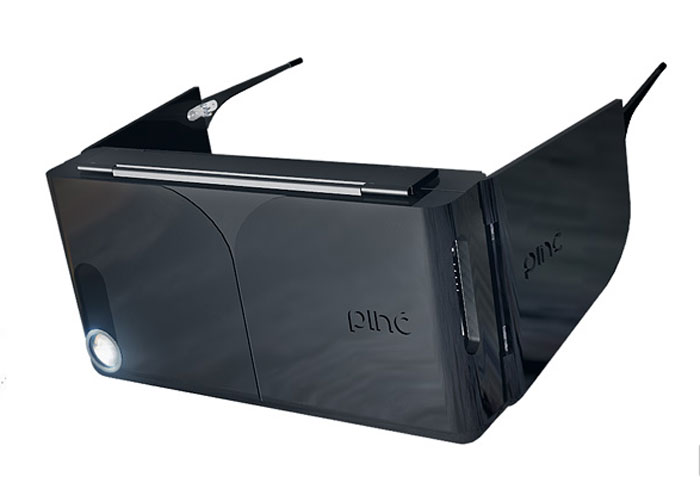
Shopping has never been more convenient, quick and efficient since the rise of online. But despite the groundbreaking innovations of e-commerce in the last decade, one entrepreneur saw shortcomings: smartphones and tablets are too small for online shoppers to truly get a feel for what they’re about to buy.
That’s where Pinć comes in. Pinć, pronounced “pinch,” takes the monumental step of utilizing virtual reality to fulfill consumers’ online shopping experiences. And its founder, Cordon Development Labs president Milan Baic, believes the product will come to represent the future of e-commerce.
The product connects a smartphone to a 3D-printed case, which communicates with LED finger rings. The case is strapped to the users’ face and contains aspheric lenses that allow shoppers to see a rendering of a 3D VR landscape, while the LED rings let users to control their smartphone screen and interact with their virtual reality. Those LED lights are seen by an iPhone’s rear-facing camera, while its accelerometer tracks the head’s movements. Altogether, its capabilities make Pinc the perfect technology to up your online shopping experience.
It’s a mix of hardware and software, the latter in the form of the free Pinć app, which creates a split screen image displayed by a smartphone that turns into the 3D VR seen by Pinć users.
Baic says consumers shouldn’t mistake Pinć for an Oculus Rift imitator, though; Cordon has taken steps to eliminate several shortfalls of the well-known virtual reality technology. OR requires that users plug the product into a computer, and doesn’t allow users to interact with their VR through hand movements.
But VentureBeat reporter Simon Cohen, who visited the Cordon offices, says Pinć is far from a perfect product. Certain environments – like an especially sunny day – can interfere with the hardware’s ability to read the LED lights used to communicate hand movements to the smartphone, for example. Regardless, the product aims to offer a virtual shopping mall with virtually limitless real estate for stores. Pinć plans to generate revenue by charging retailers to occupy that real estate, and by advertising.
It’s a work in progress, and Cordon admits that it isn’t entirely clear yet whether consumers actually want a virtual reality shopping experience. But Baic says he is committed to solving problems and shortcomings of the e-commerce world without pumping the market with new and unnecessary products. “We’re not a hardware company,” he says. “Our primary focus is on software. We didn’t want to bring to market another set of electronics. What we wanted to do was repurpose what was already in people’s pockets.”